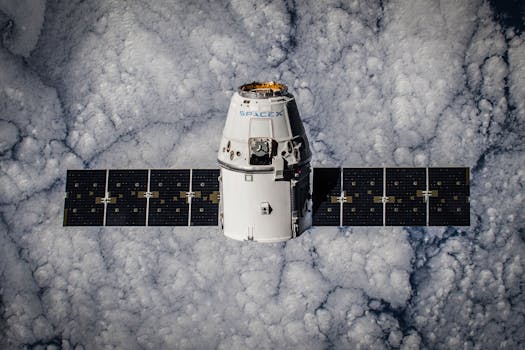GEO Satellites: Unlocking the Power of Geostationary Orbit

GEO Satellites: Unlocking the Power of Geostationary Orbit
GEO satellites, or geostationary orbit satellites, are a type of satellite that orbits the Earth at an altitude of approximately 36,000 kilometers, allowing them to remain stationary relative to a fixed point on the Earth’s surface. This unique characteristic makes GEO satellites an essential component of modern satellite communication, enabling a wide range of applications such as telecommunications, weather forecasting, and navigation.
GEO satellites have been in use for several decades, with the first geostationary satellite, Syncom 2, launched in 1963. Since then, the technology has evolved significantly, with advancements in materials, propulsion systems, and payload capacity. Today, GEO satellites play a critical role in global communication, providing services such as broadband internet, television broadcasting, and mobile connectivity.
How GEO Satellites Work
GEO satellites work by transmitting and receiving signals to and from Earth stations, which are specialized antennas that communicate with the satellite. The satellite acts as a repeater, amplifying the signal and re-transmitting it back to Earth, allowing for communication between two distant points. The geostationary orbit allows the satellite to maintain a fixed position relative to the Earth’s surface, ensuring a stable and continuous connection.
The signals transmitted by GEO satellites are typically in the C-band, Ku-band, or Ka-band frequency ranges, which offer a high level of reliability and resistance to interference. The satellites are also equipped with advanced antennas and transponders, which enable them to receive and transmit multiple signals simultaneously, increasing their capacity and efficiency.
Applications of GEO Satellites
GEO satellites have a wide range of applications, including telecommunications, weather forecasting, navigation, and remote sensing. In the telecommunications sector, GEO satellites provide broadband internet, television broadcasting, and mobile connectivity, particularly in areas where terrestrial infrastructure is limited or non-existent.
In weather forecasting, GEO satellites such as the Geostationary Operational Environmental Satellite (GOES) series provide critical imagery and data for monitoring weather patterns, storms, and natural disasters. The satellites’ ability to maintain a fixed position allows for continuous observation of the same area, enabling accurate forecasting and warning systems.
Navigation systems such as GPS rely on a network of GEO satellites to provide location information and timing signals, which are essential for a wide range of applications, including aviation, maritime, and land transportation.
Benefits and Challenges of GEO Satellites
GEO satellites offer several benefits, including global coverage, high capacity, and reliability. They can provide connectivity to remote and underserved areas, enabling access to essential services such as healthcare, education, and finance. Additionally, GEO satellites can support disaster response and recovery efforts by providing critical communication services and situational awareness.
However, GEO satellites also face several challenges, including congestion in the geostationary orbit, interference from other satellites and terrestrial systems, and the risk of satellite failure or collision. The increasing number of satellites in the geostationary orbit has raised concerns about the potential for collisions and the impact on the environment.
Furthermore, the high cost of launching and operating GEO satellites can be a barrier to entry for new players, limiting competition and innovation in the industry. The development of new technologies such as reusable launch vehicles and smaller satellites is helping to address these challenges, making it more accessible and affordable to launch and operate satellites.
Future of GEO Satellites
The future of GEO satellites looks promising, with advancements in technology and increasing demand for satellite services. The development of new satellite constellations such as OneWeb and Amazon’s Kuiper Systems is expected to provide faster and more affordable internet services, while the growth of 5G networks will require more satellite capacity to support the increasing demand for data.
In addition, the use of GEO satellites for Earth observation and remote sensing is becoming increasingly important, with applications such as monitoring climate change, tracking natural disasters, and managing natural resources. The integration of GEO satellites with other technologies such as drones, IoT devices, and artificial intelligence will enable new and innovative applications, further expanding the potential of satellite communication.






